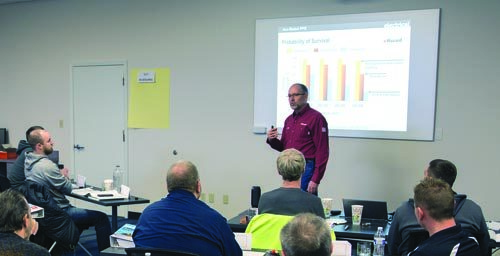Electrical safety
What recent innovations have the potential to protect workers from electrical injuries?

Responding is Hugh Hoagland, senior managing partner, e-Hazard, Louisville, KY.
One of the best things about being involved with safety is seeing the innovation that’s happening every day. Conducting arc flash testing and incident investigations, as well as working with committees such as NFPA 70E, CSA Z462, ASTM and IEC, provides insight into changes in personal protective equipment and standards that are benefiting workers. Here are some of the newest PPE and work practice changes.
Distance devices for testing electrical circuits
Many companies are making and marketing devices for proximity testing and direct testing of electrical circuits to allow workers doing troubleshooting and verification tests to stand outside the arc flash boundary. This can lower the risk of an event, incident energy and the amount of PPE needed for some common tasks.
Remote operation devices for electrical circuits
Electrical operators frequently work with circuits that have the potential to fail. Although failures are infrequent, PPE is often needed when doing a risk assessment. Normal operation is allowed with no PPE when the equipment presents a low risk of injury, is properly maintained and installed, and shows no sign of impending failure. This is a difficult decision when the arc flash label indicates PPE is required to work with the equipment, and it’s impossible when proper maintenance is not being done – which is frequently the case.
Arc-rated rubber insulating gloves and protector gloves
ASTM F2675-19 was recently published, and the restriction against rating ASTM F696 protector gloves and D120 rubber insulating gloves has been removed. A proposed ASTM standard for arc-rated protector gloves using materials other than leather is working its way through committee, and these two innovations could truly change the end user experience for industrial electricians.
Colorless arc flash faceshields
New nanotechnology and other dyeing technologies for polycarbonates have resulted in the two largest manufacturers of arc-rated faceshields now offering colorless arc flash shields up to 100 cal/cm² in hoods and up to 20 cal/cm² in faceshields. The new colorless technologies are just as arc-protective as the old technologies, and they solve the problem of color perception when identifying wire colors through colored shields.
Vented and lift-front arc flash faceshields
New venting technologies (thermodynamically designed slits) and lift-front designs make using arc flash faceshields and arc flash shields more comfortable. Venting and newer antifogging technology help solve the issue of fogging – especially in cold and hot extremes, when these problems are most apparent. When workers are in hoods for extended periods, fan technology can make a huge difference in comfort, oxygen availability in the hood and fogging. These technological features make a difference in worker comfort. Some burns occur when workers remove hoods to see. Raising the visibility with better shields and extra lighting make the need to remove PPE less likely, better protecting workers.
Lighter-weight arc flash suits
Older arc flash suits weigh around 20 pounds, excluding the hood system. New suits can be less than 11 pounds for 100 cal/cm² systems and 5 pounds for 40 cal/cm² systems. Lighter weights and easier respiration make the worker more likely to wear the suit when needed.
Innovative arc flash kit providers
New kit providers are now offering high-end suits, gloves and other PPE in their kits. Lighter-weight suits, fan-cooled hoods and cooling suits are now more common. Kits are 8, 12, 20, 40 and 100 cal/cm², making it easy to outfit the infrequent user or the traveling user.
If your PPE isn’t state of the art and needs to be used frequently, consider an upgrade to a newer system.
Editor's note: This article represents the independent views of the author and should not be construed as a National Safety Council endorsement.
Post a comment to this article
Safety+Health welcomes comments that promote respectful dialogue. Please stay on topic. Comments that contain personal attacks, profanity or abusive language – or those aggressively promoting products or services – will be removed. We reserve the right to determine which comments violate our comment policy. (Anonymous comments are welcome; merely skip the “name” field in the comment box. An email address is required but will not be included with your comment.)

